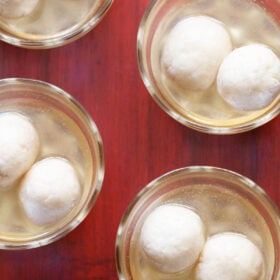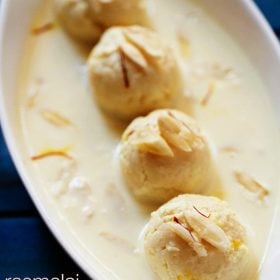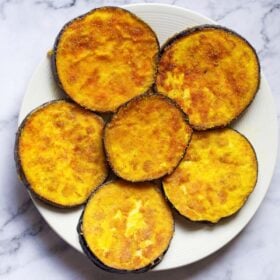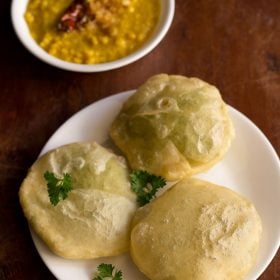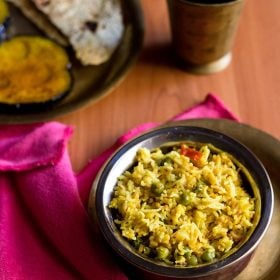Bengali khichdi also known as Bhaja muger dal khichuri is a delicious one-pot meal of rice, moong lentils and mixed vegetables. This Bengali khichuri recipe is always made during Durga puja festival. It is offered as bhog to Goddess Durga along with some other Bengali delicacies. A satvik, vegan and no onion no garlic recipe.
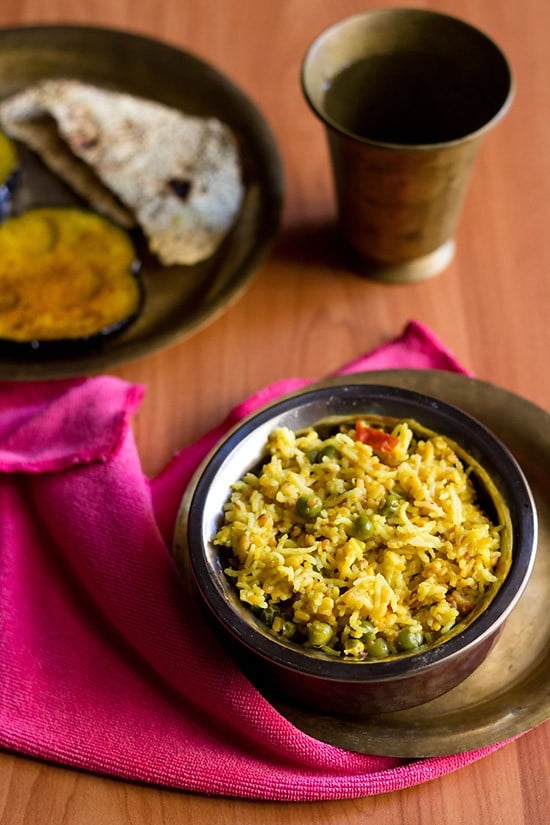
The Bengali khichdi has an addition of mixed vegetables that we generally add to Pulao like – cauliflower, green peas, potatoes, carrots etc. I had potatoes, cauliflower and peas and hence added them to the khichdi.
Adding the vegetables to this rice and lentil preparation makes it a wholesome one-pot meal. You can even skip adding vegetables if you prefer.
Again like the Cholar Dal, in this recipe, panch phoron (5 spice mix) is not used. The khichuri is made fragrant by tempering whole garam masala or spices like tej patta, cinnamon, cloves and green cardamom.
The moong lentils are roasted first and this imparts a lovely warm aroma and taste to the khichdi. It is also a no onion no garlic recipe. The consistency of the khichdi can be adjusted to one’s preference. The khichdi that is made during Durga puja has a porridge like consistency. To suit the family’s taste buds, I did not make a porridge like khichdi.
I have loosely adapted this Bengali khichuri recipe from two of the Bengali cookbooks which I have. Mix and matched both of them to get the best recipe.
This roasted Bengali khichdi is served with Baingan Bhaja or Aloo Bhaja. A bowl of yogurt and some roasted papads by the side would also go very well with it. I had made both fried as well as baked baingan bhaja to go with the khichdi and the combo was really delicious.
You can make this one pot meal for lunch or dinner.
How to make Bengali Khichdi
1. Rinse 1 cup of basmati rice or Govind bhog rice a couple of times in fresh water. Here I have used basmati rice. But usually Govind bhog rice is used.
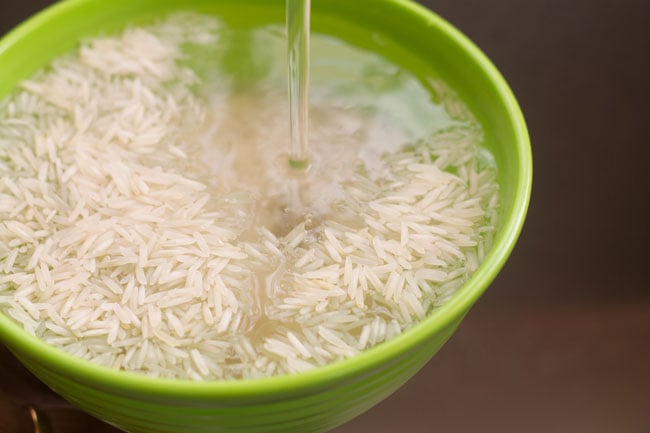
2. Soak the rice in enough water in a bowl for 20 to 30 minutes.
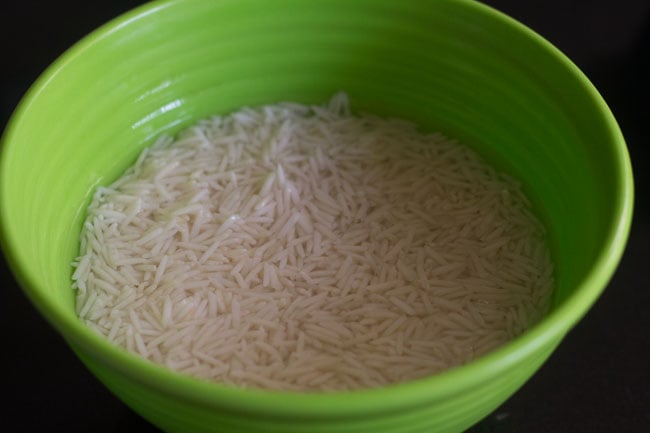
3. After 20 to 30 minutes drain the water using a colander and set the soaked rice aside.
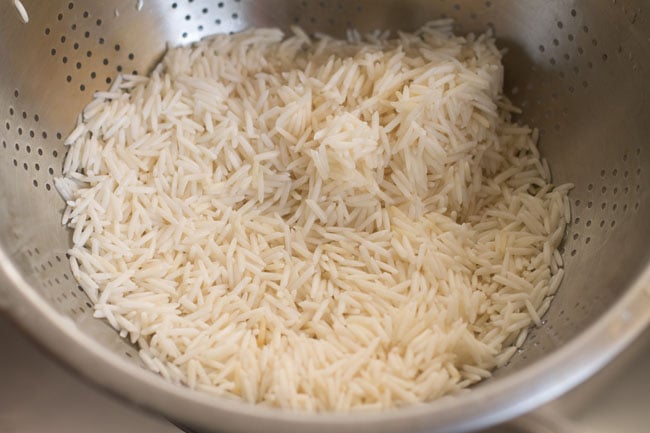
4. In a pan, take 1 cup moong lentils (split and husked moong dal). Roast the dal on low heat stirring often.
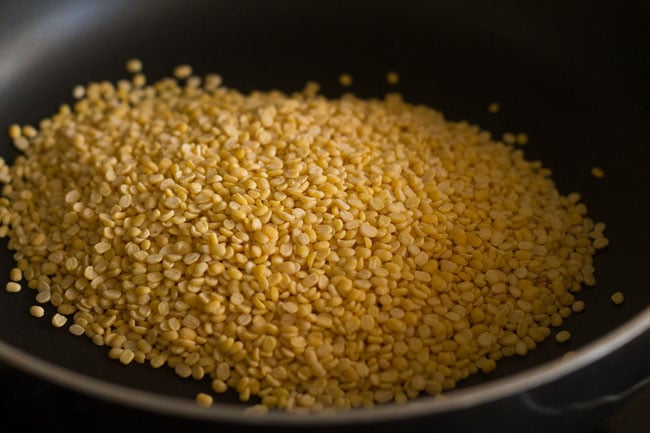
5. While roasting or toasting stir moong dal often on a low heat. Continuous stirring helps the lentils to be evenly roasted.
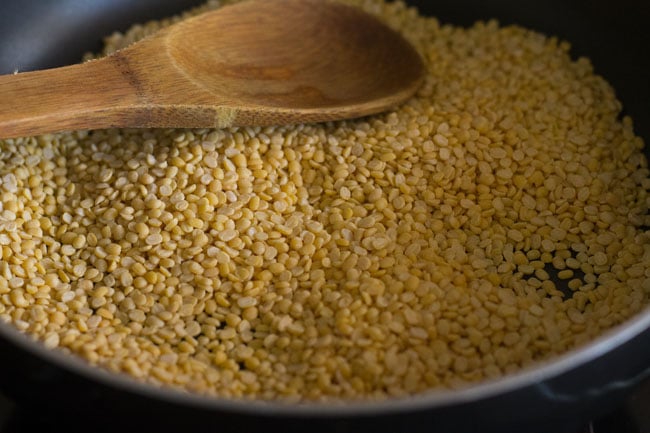
6. Roast till the lentils turn light golden and fragrant. You will see that the lentils will begin to change color. Once the lentils are roasted well enough, remove them from the pan and transfer to a bowl.
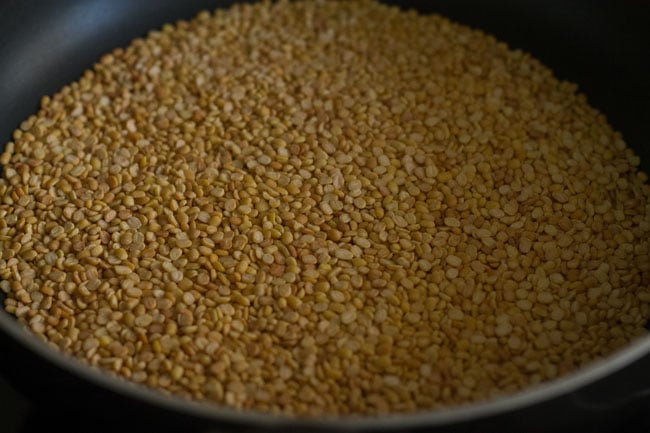
7. When the lentils cool down, then rinse them in the water a couple of times. Then drain the water and set the moong lentils aside.
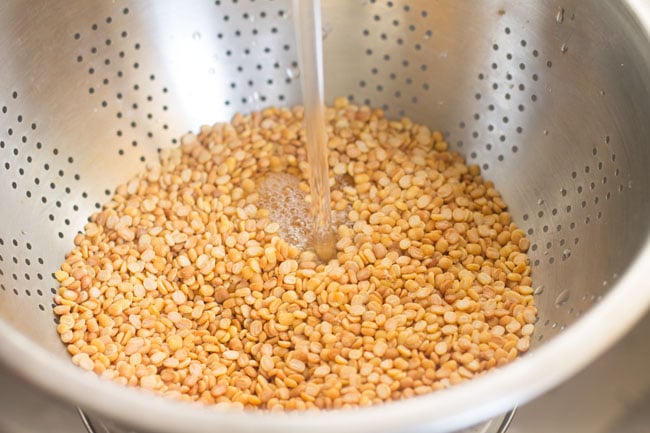
Making Bengali khichuri
8. Heat 3 tablespoons ghee or oil in a 3 litre stovetop pressure cooker.
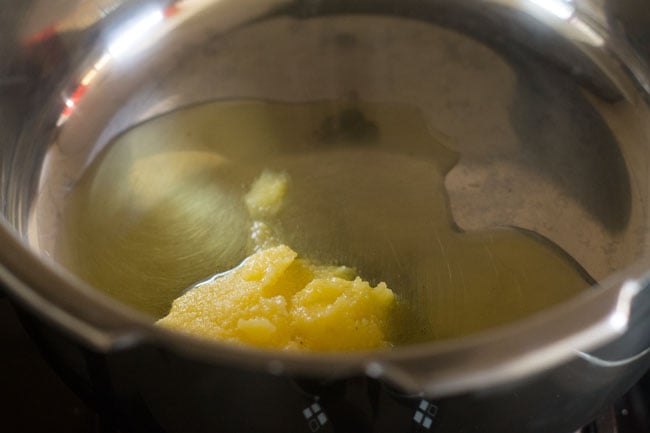
9. Add 1 inch cinnamon, 2 green cardamoms, 3 cloves, 1 tej patta (Indian bay leaf) and 1 teaspoon cumin seeds. Fry the whole spices till they splutter and become fragrant on a low heat.
The cumin seeds should also crackle when frying the spices.
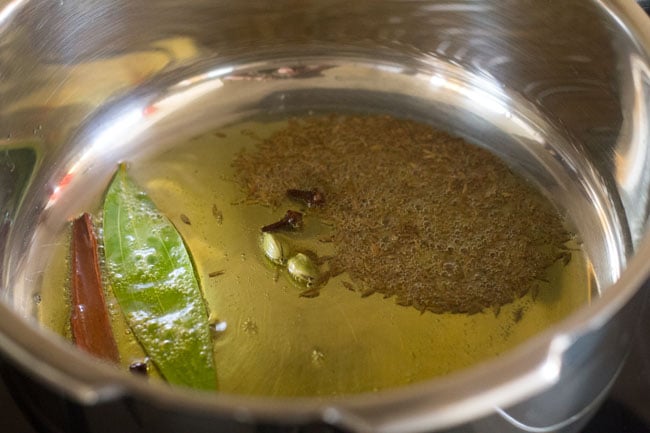
10. When the spices become fragrant, add 1 inch grated ginger.
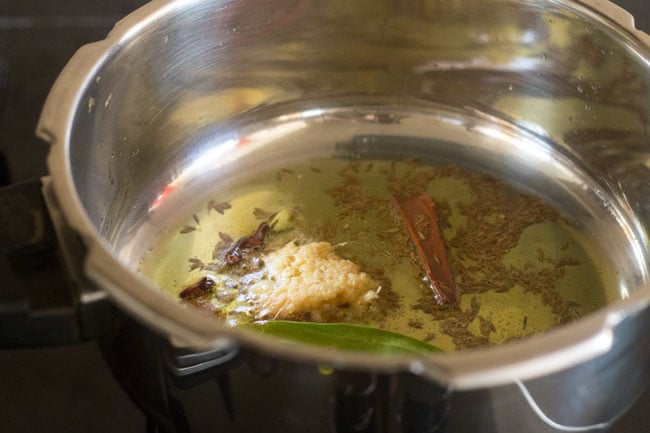
11. Fry for 5 to 6 seconds or till the raw aroma of the ginger goes away.
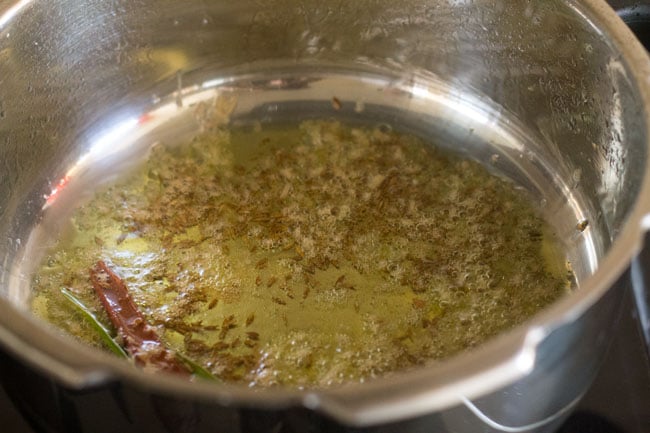
12. Then add ½ teaspoon turmeric powder, ½ to ¾ teaspoon red chili powder and 1 pinch asafoetida (hing). The addition of asafoetida is optional.
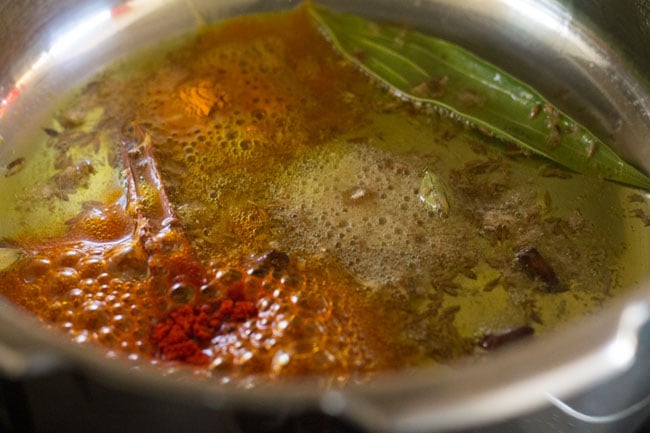
13. Saute for 2 to 3 seconds on a low heat.
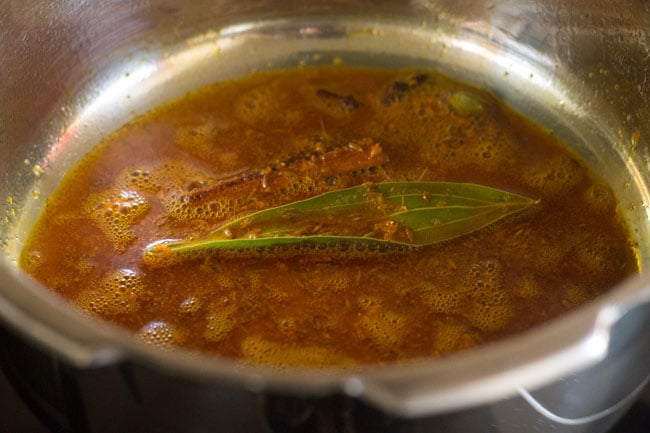
14. Then add 2 small-sized chopped tomatoes. Also add 1 chopped green chili.
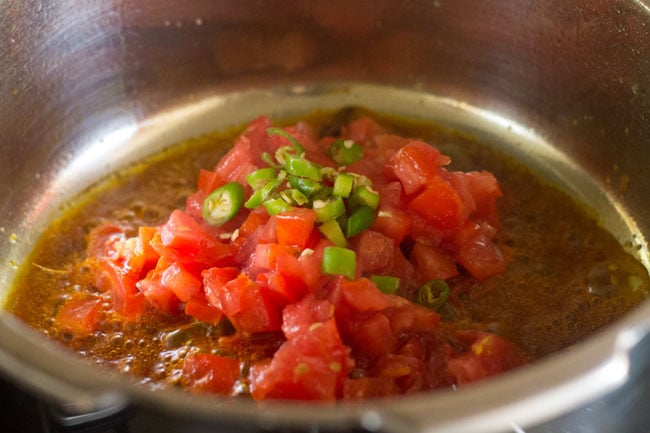
15. Saute stirring often on medium-low heat till the tomatoes soften and become pulpy.
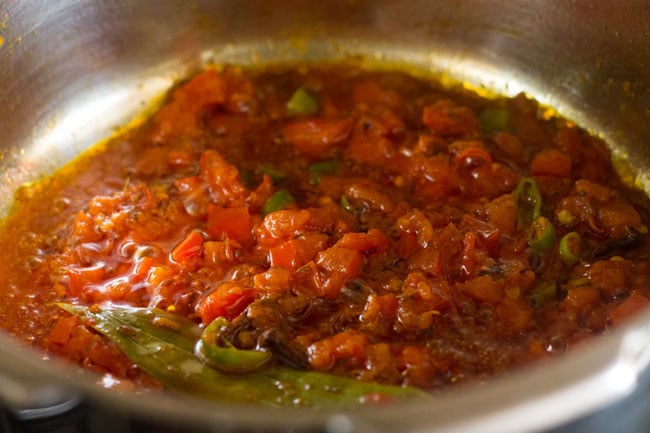
16. Add 1 to 1.5 cups chopped mixed veggies like cauliflower, potato, carrots and green peas.
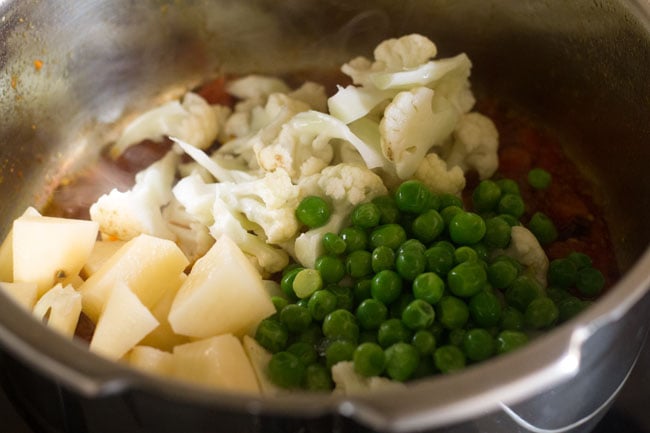
17. Stir and mix well. Saute the veggies for a minute.
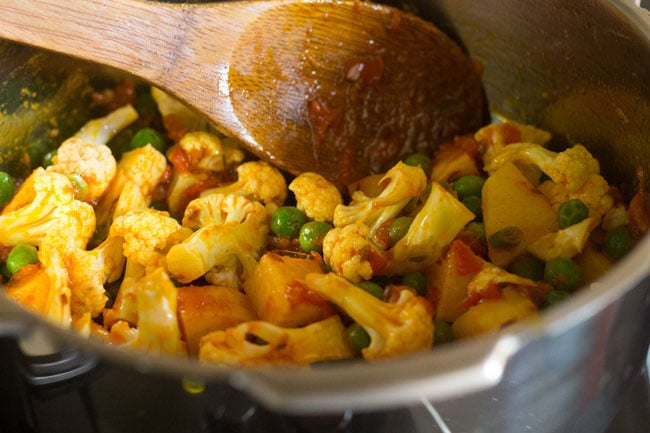
18. Then add the roasted moong dal.
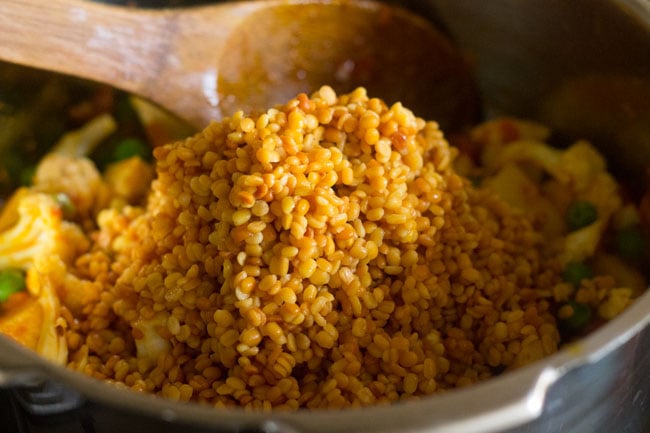
19. Saute for 2 minutes on a low heat.
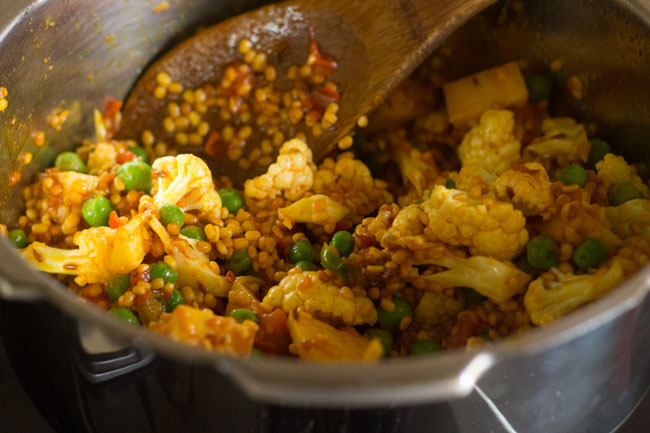
20. Next add the soaked rice.
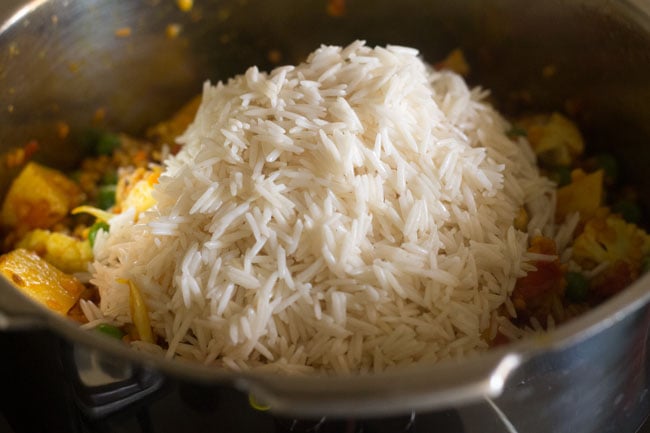
21. Stir and mix the rice grains gently with the rest of the ingredients.
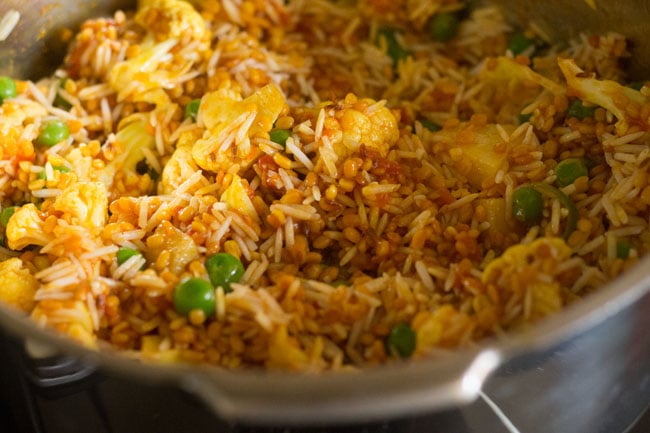
22. Add ½ teaspoon sugar and salt as required.
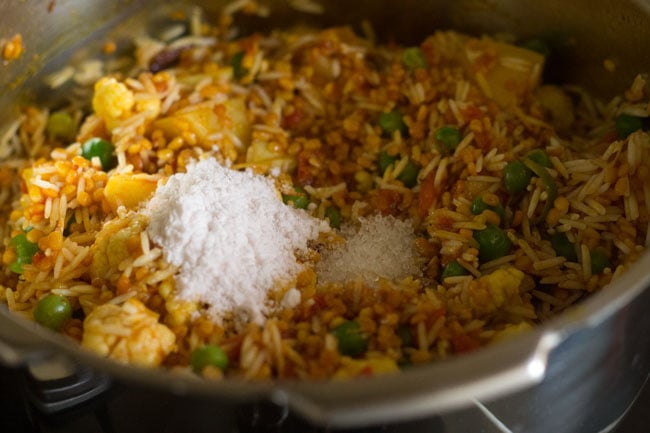
23. Next pour 5 cups water. Stir and mix well. You can slightly alter the amount of water depending upon the consistency you prefer.
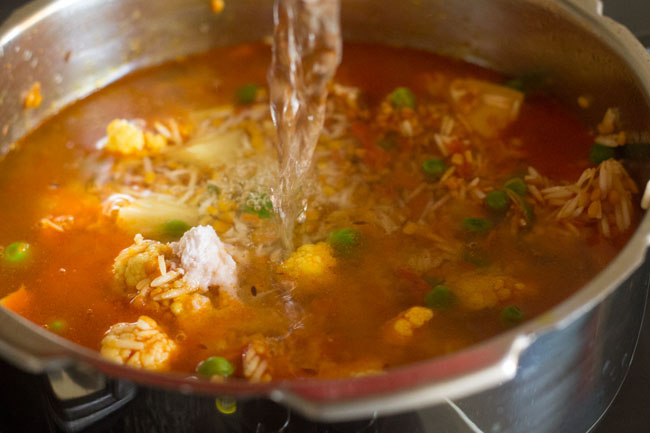
24. Then pressure cook for 4 to 5 whistles on medium to high heat.
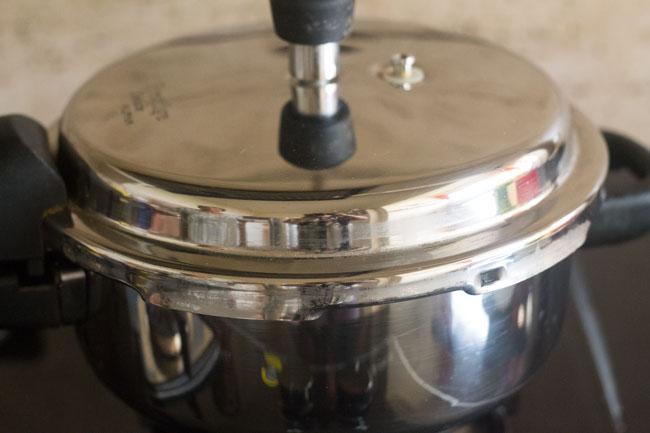
25. Once the pressure settles down on its own, then only open the lid of the cooker.
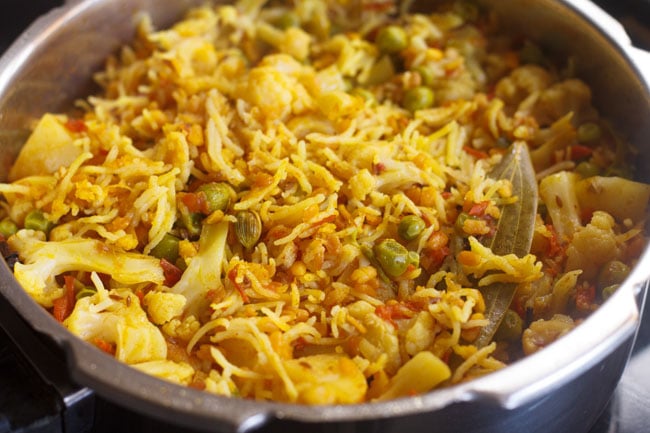
30. Serve the Bengali khichdi hot or warm with baingan bhaja or yogurt and some roasted papads by the side. You can garnish it with coriander leaves if you like. It makes for a healthy and wholesome meal.
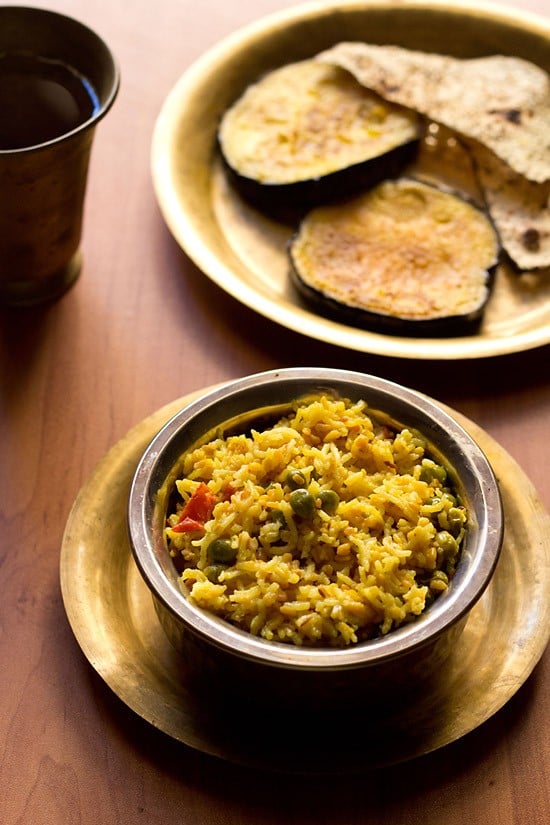
Few more rice recipes for you!
- Khichdi Recipe – made with mung lentils and rice.
- Bajra khichdi
- Palak khichdi
- Masala khichdi
- Kolkata biryani – vegetarian version
Please be sure to rate the recipe in the recipe card or leave a comment below if you have made it. For more vegetarian inspirations, Sign Up for my emails or follow me on Instagram, Youtube, Facebook, Pinterest or Twitter.
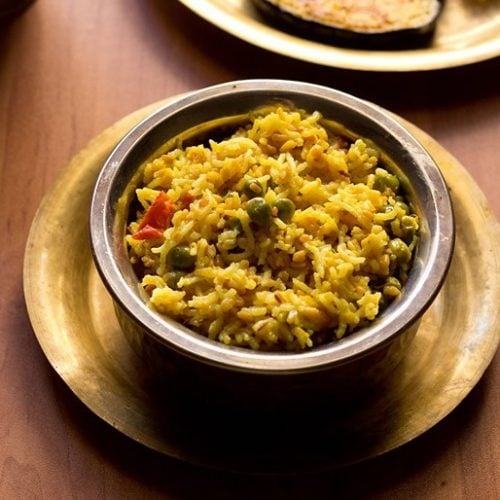
Bengali Khichdi
Ingredients
- 1 cup basmati rice or govind bhog rice
- 1 cup dhuli moong dal (split and husked moong dal)
- 3 tablespoon Ghee or 2.5 tablespoon oil
- 1 inch cinnamon
- 2 green cardamom
- 3 cloves
- 1 tej patta (Indian bay leaf)
- 1 teaspoon cumin seeds or cumin powder
- 1 inch grated ginger
- ½ teaspoon turmeric powder
- ½ to ¾ teaspoon red chili powder
- 1 pinch asafoetida (hing) – optional
- 2 small tomatoes, chopped (optional)
- 1 green chili, chopped
- 2 small to medium potatoes, ½ cup cauliflower and ½ cup green peas or 1 to 1.5 cups of chopped mix vegetables like cauliflower, peas, potatoes and carrots
- ½ teaspoon sugar or as required – optional
- rock salt (edible and food grade) or sendha namak as required
- 5 cups water
Instructions
preparation
- Rinse the rice in fresh water couple of times. Then soak the rice in water for 20 to 30 minutes. After 20 to 30 minutes drain all the water and set the soaked rice aside.
- In a pan slow roast the moong lentils till they turn light golden and fragrant.
- Keep on stirring to get uniform and even roasting and browning. Once well roasted then transfer the lentils to a bowl and let them cool at room temperature.
- When the lentils cool, rinse them in fresh water a few times. Drain all the water and set the lentils aside.
Making khichuri
- Heat ghee or oil in a 3 litre stovetop pressure cooker.
- First fry the whole spices on low heat stirring often till they become fragrant – cinnamon, cardamom, cloves, bay leaf and cumin seeds.
- The cumin seeds should also crackle when frying the spices.
- Now add the grated ginger and saute for a 5 to 6 seconds or till the raw aroma of the ginger goes away.
- Add turmeric, red chili powder and asafoetida and saute for 2 to 3 seconds on a low heat.
- Then add chopped tomatoes and chopped green chilies and saute stirring often till the tomatoes become soft.
- Add the chopped mixed veggies like potato, cauliflower and peas.
- Stir and mix well. Saute for a minute on low heat.
- Add the roasted moong dal and saute for 2 minutes.
- Next add the soaked rice and stir gently to mix.
- Pour 5 cups water and add sugar and salt as required.
- Stir and then pressure cook for 4 to 5 whistles on medium to high heat.
- Once the pressure settles down on its own, then only open the lid of the cooker.
- Serve the khichuri hot or warm with baingan bhaja or yogurt and some roasted papads by the side.
Notes
- To get a porridge like consistency in the khichdi you can add an additional ½ to 1 cup water.
- You can mix vegetables like carrots, potatoes, cauliflower, capsicum, green peas, eggplant, french beans, baby corn, broccoli.
- You can scale this recipe to make a small serving or a large serving.
- The mung lentils should be in their shelf period. Make sure they are fresh and not aged.
Nutrition Info (Approximate Values)
This Bengali Khichdi post from the blog archives first published in October 2013 has been republished and updated on 12 January 2022.
